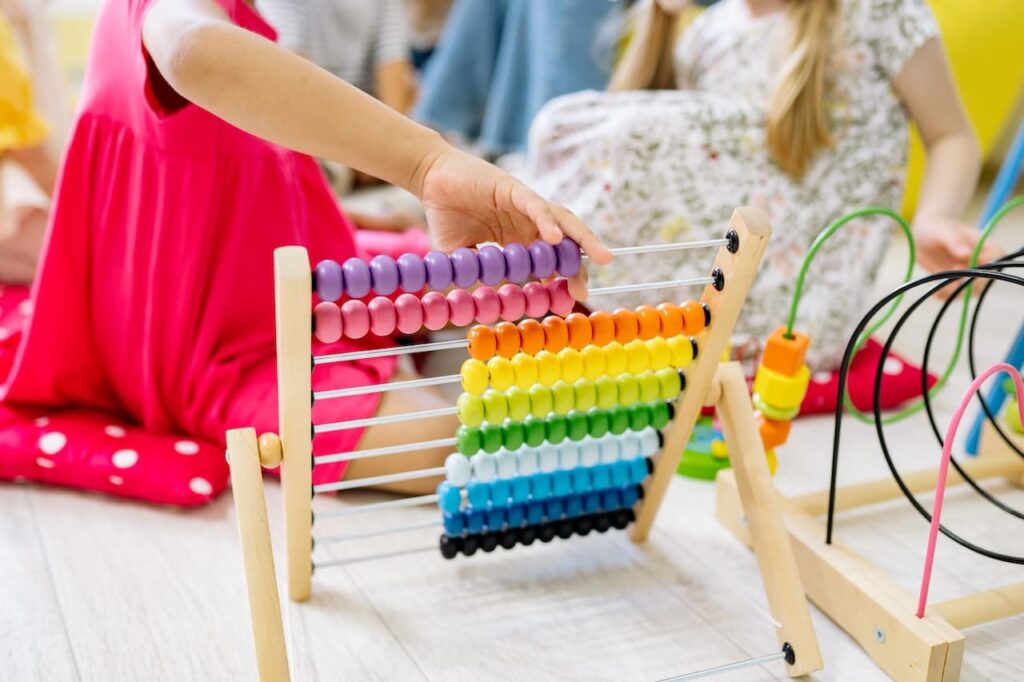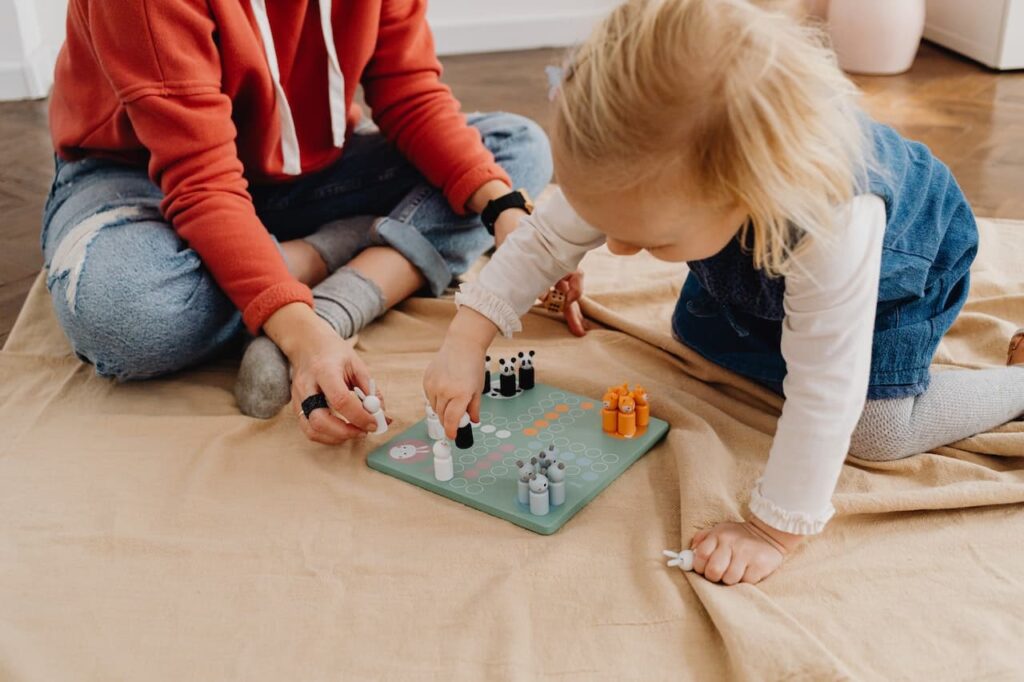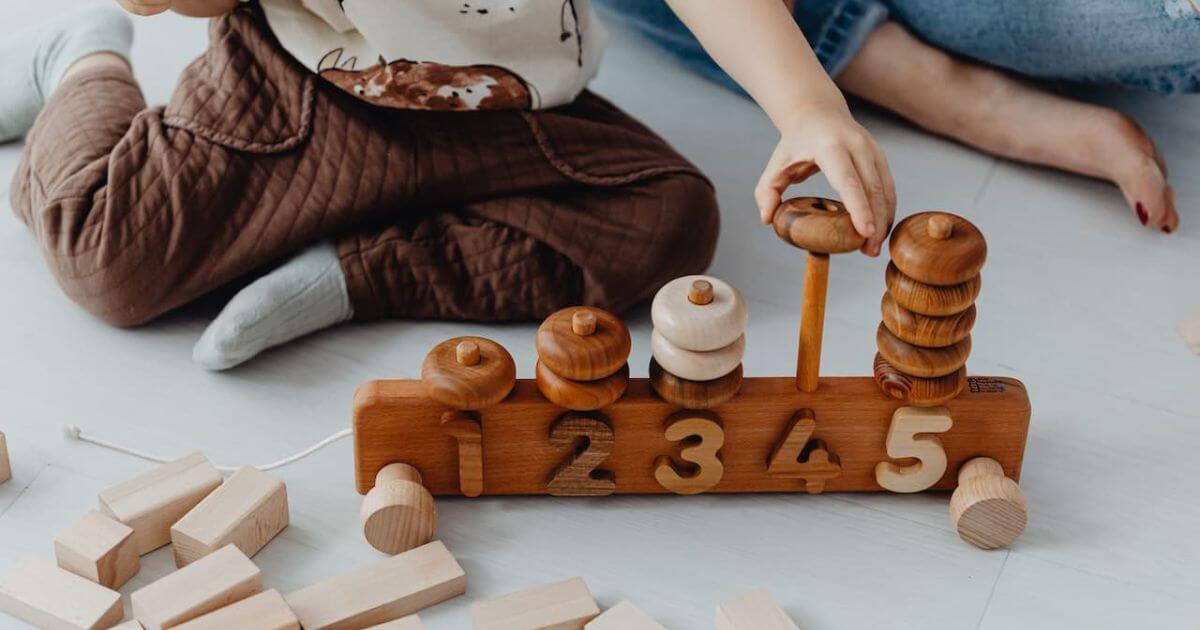Have you ever spotted your little one wide-eyed at the sight of a huge ice cream sundae or watched their tiny fingers eagerly count the petals of a garden flower? These magical moments are actually the starting points of a fascinating journey into the world of math.
In this guide, we will talk about how to teach math to preschoolers and try to make math a fun-filled adventure for your little one! It’s not just about teaching them numbers; it’s also about lighting up that spark of curiosity and love for learning in their bright eyes.
As proud parents of growing children, we understand the joys and challenges you face in making your children grow up in the right way. That’s why we’ve crafted this guide, packed with practical, fun, and effective strategies that seamlessly integrate math into everyday life. Our goal is to make ‘math time’ the highlight of your child’s day, where learning becomes a magical experience. So, let’s embark on this journey together and create some enchanting math moments that will leave a lasting impression!
Table of Contents
How to teach math to preschoolers?
Embark on a journey of mathematical exploration as we delve into the realm of teaching math to preschoolers. Here are some effective strategies, engaging activities, and expert tips on how to teach math to preschoolers that will lay a strong foundation in math for your little ones.
Counting and Singing
Based on my experience, kids love to sing and dance, so incorporating counting into songs and rhymes is a great way to introduce them to numbers. For instance, my children loved singing songs like ‘10 Green Bottles‘ and ‘1, 2, 3, 4, 5, Once I Caught a Fish Alive‘. This not only made them familiar with counting but also made learning fun and engaging.
Exploring Numbers in the Environment
As we went about our day, I would point out numbers that we came across, like house numbers, the numbers on a remote control, or even numbers on car license plates. This made my children realize that numbers are part of everyday life and got them excited about spotting and recognizing numbers everywhere we went.
Reading and Counting Together
Reading books with my children also provided an excellent opportunity to develop early counting skills. One of our favorite activities was to count the characters or objects on each page of the book. Books like “The Very Hungry Caterpillar” and “Ten Little Monkeys” were particularly helpful in this regard, as they integrated numbers and counting into the storyline.
Practical Counting Exercises:
Counting real objects became a part of our daily routine. We turned everyday things into counting exercises.
- How many steps are there in our home?
- How many red cars did we spot on our drive to the park? Or
- How many apples have we tossed into our grocery cart?
My children also loved helping me sort laundry, where we would count the number of socks or shirts. This made counting practical and applicable to their everyday lives.

Creative Play with Numbers
We made learning about numbers a hands-on experience. My children loved forming numbers with play dough or drawing them in the sand at the beach.
We also used math toys, like number puzzles and counting beads, which not only made learning fun but also improved their fine motor skills.
One toy that was a hit in our house was a wooden number puzzle, where each numeral fit into a slot, helping children connect the shape of the number with its name.

Math Games for Skill Building
My children loved playing games like “Snakes and Ladders” and “Dominoes,” which helped them practice counting and number recognition in a fun and competitive way.
We also loved doing jigsaw puzzles together, which helped them develop spatial awareness and problem-solving skills.

Understanding Mathematical Concepts
My children started recognizing shapes in the real world and sorting their toys by color, shape, size, or purpose. They also enjoyed counting up to 20 and pointing to and counting items in a group. We used building blocks to understand numerals and their quantities, for instance, stacking five blocks and recognizing them as ‘5’.
Math and Kindergartners
By the age of 5, my children started adding by counting their fingers. They loved treasure hunt games, where they used very basic maps to find a “hidden treasure.” This was a fun way to improve their spatial awareness and understanding of directions.
The use of a daily calendar also helped them understand basic time concepts, like morning, afternoon, and the days of the week. We also introduced them to math board games, like “Sum Swamp,” which helped them practice simple addition and subtraction in a fun and engaging way.
Incorporating Math in Daily Routines
As my children grew older, I started incorporating math into our daily routines. For instance, while cooking, I would ask them to help me measure ingredients. This not only engaged them in the process but also helped them understand the concept of measurements.
While shopping for groceries, I would ask them to look at the price tags of the items and compare their costs. Sometimes, I’d even have them add up the cost of the items in our cart.

Encouraging Mathematical Thinking
I always encouraged my children to think mathematically. Let’s say my kids were looking to share a pizza or a slice of cake with their buddies. I’d pop a question their way: “How would you slice it up so everyone gets their fair share?” This helped them understand the concept of fractions and division in a practical way, without them even realizing it!
Use Technology
We also made use of educational apps and online resources to make learning math more interactive and fun. Apps like “Prodigy” and “MathLand” were some of their favorites. These apps have a variety of games and puzzles that make learning different math concepts enjoyable.
Recognizing their Progress
It was important for me to recognize and appreciate my children’s progress. Whenever they grasped a new concept or solved a problem on their own, I made sure to acknowledge their effort. This boosted their confidence and motivated them to take on more challenging problems.
Have fun teaching math to your kids
Diving into the world of math with your little one can be a delightful journey, full of fun and laughter. You can spice it up with lively songs, their favorite toys, and even everyday items around your home. Our goal is to ignite that little spark of curiosity in your child, fueling their excitement about unraveling the mysteries of the world around them.
I hope you found this guide on how to teach math to preschoolers useful. Remember, it’s perfectly fine if they take a bit of time to grasp certain math concepts. Each child is wonderfully unique, learning and growing at their own pace.
So, having patience is key. Keep the journey of learning lighthearted and captivating, and before you even realize it, your child will develop a deep affection for math—a love that’s going to stick with them for their entire life. Always keep in mind that it’s not a sprint, but a joyful journey you both are embarking on together!
We have also recommended 10 best educational toys for children. Do give it a read to continue your child’s learning journey.









Leave a Reply